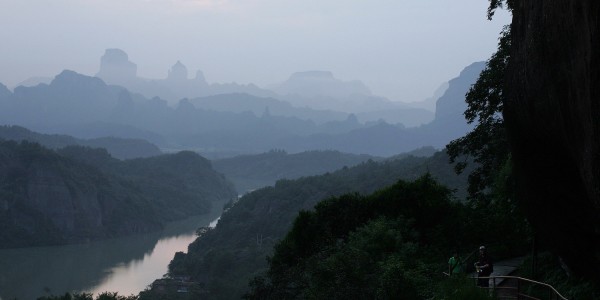Tourists are flocking to national parks in growing numbers, according to a new study, but only in the poorest places. In richer countries, including the United States and Japan, visitor rates have reached a plateau or have even started dropping.
From a practical perspective, understanding how frequently people visit protected areas is an important step towards better managing those parks. On a more emotional level, the study helps fight recent concerns that people are falling out of love with nature.
"I think this is very encouraging news," said lead author Andrew Balmford, a zoologist at the University of Cambridge in the United Kingdom. "In most places, wildlife is not going to survive unless people, in particular local people want it."
Balmford and colleagues looked at total numbers of visits to as many protected areas as they could find information about. Most countries do not systematically collect these kinds of numbers, and no one had ever tried to create such a wide-scale database. So, the researchers had to troll through whatever was out there and talk to anyone who knew anything.
They eventually gathered data on about 280 protected areas in 20 countries, including Ghana, Korea, Madagascar, the Philippines, the U.K., and Sri Lanka. For each park, the researchers looked at changes in the number of visits over at least a six-year span, stretching from 1992 to 2006.
Slideshow 35 photos
UNESCO World Heritage sites
Last year, a well-publicized study in the "Proceedings of the National Academy of Sciences" found that visits to natural areas had dropped sharply in the United States and Japan over the last 20 years, and the researchers concluded that people were losing interest in nature-based recreation.
The new study, which appeared in the journal "PLoS Biology", found only slight declines in these places, among other wealthy nations. And in 15 of the 20 countries, attendance was on the rise, with particularly fast growth in Tanzania, South Africa, Peru, South Korea, Ghana and China.
There are a variety of theories to explain the trends. One possibility is that people with more money can afford other leisure options, including video games and Web-surfing, that may be more convenient and alluring than visiting the wilderness.
Another possibility is that parks like Yosemite and Yellowstone have reached their capacity, deterring people who want to avoid the crowds. People with expendable income may also be more likely to travel to parks in foreign lands, where visitation rates are rising, though in most places other than Africa, the new study found, the majority of park visitors are locals.
Adina Merenlender, a conservation biologist at the University of California, Berkeley, offered yet another explanation: Americans may be forgoing national parks in favor of local ones, which provide easier and cheaper ways to enjoy nature but were not considered in the current study.
Growing numbers of people are birding, walking and swimming with their kids in the local creek, she said. Voters continue to support initiatives that fund parkland. And millions of dollars are spent each year to protect open spaces.
"All kinds of different people use open spaces in different ways and express their love of nature in different ways," Merenlender said. "I'm not sure if visits to national parks is a good metric for how people are loving nature. They may be loving their backyard park to death, actually."
Figuring out how many people are hitting which parks could help officials decide where to allocate resources for facilities and how to manage growing crowds. By looking at how much money people are spending to enjoy nature, Balmford said, this kind of work might also help scientists put an economic value on wilderness tourism.
The work brings up some concerns, he added. For one thing, our zeal for nature can damage both the environment we trudge through and the economics of the places we visit — if the money we spend goes into a travel agent's pocket instead of into the local community.
"Nature tourism isn't unequivocally good news for nature," Balmford said. Still, the fact that people continue to love nature is a welcomed sign in light of other, more negative reports.
"If we're not careful, we could write a premature obituary for nature," he said. "That would not be a good idea."
